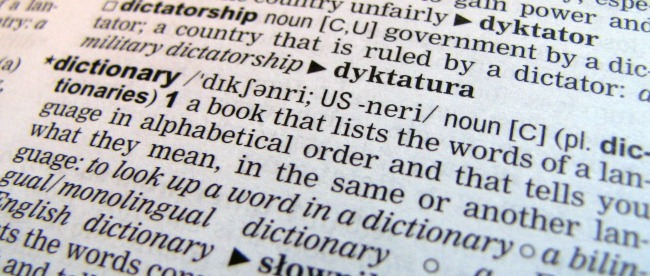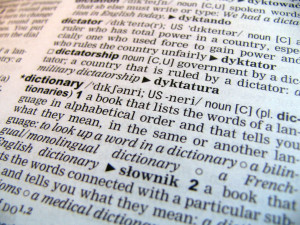Workplace Harassment: Grab Your Dictionaries

 Employers should feel warm and cozy after the Supreme Court’s liability-insulating decision in Vance v. Ball State University.
Employers should feel warm and cozy after the Supreme Court’s liability-insulating decision in Vance v. Ball State University.
First, a little background before we get to Vance.
In a pair of cases from 1998, Faragher v. Boca Raton and Burlington Industries, Inc. v. Ellerth, the Supreme Court of the United States announced how an employer may be vicariously liable for workplace harassment under Title VII of the 1964 Civil Rights Act. Under Faragher/Ellerth, there are two different frameworks for liability: (1) co-worker liability (negligence) and (2) supervisor liability (a form of vicarious liability).
If the harasser is a co-worker of the victim, the individuals’ employer may be liable only if the employer was negligent–that is, if the employer knew or should have known about the harassment and failed to respond appropriately.
On the other hand, if the harasser is a supervisor of the victim, the assumption is that the employer is vicariously liable. In such cases where the harassers are supervisors, courts must choose between two different paths:
Path #1. If the supervisor makes a “tangible employment action,” such as hiring, firing, failing to promote, reassignment with significantly different responsibilities, or a decision causing a significant change in benefits, the employer is strictly liable.
Path #2. If the supervisor’s harassing behavior does not culminate in a tangible employment action, the employer can escape liability through an affirmative defense. To satisfy this affirmative defense, the employer must show (1) that the employer exercised reasonable care to prevent and correct the harassment and (2) that the victim unreasonably failed to take advantage of the preventive or corrective opportunities.
Why does the divide between co-worker and supervisor matter? If a plaintiff’s harasser is a supervisor, the employer will have to go down either Path #1 (strict liability) or Path #2 (proving an affirmative defense), both of which are significantly more difficult to face than a simple negligence standard.
With all of that law in place, why did the Supreme Court take another workplace harassment case? Well, Vance answers a question that Faragher/Ellerth somehow left open: who is a supervisor?
In Vance, Maetta Vance, an African-American employee at Ball State University (BSU), worked as a catering assistant. At BSU, Vance worked with Saundra Davis, a white woman and a catering specialist. Vance filed suit against BSU, claiming that Davis was her supervisor and that Davis had harassed her on many occasions. The District Court for the Southern District of Indiana found that BSU was not vicariously liable because Davis did not have the authority to take tangible employment actions. The court also ruled that BSU had taken reasonable care to correct the harassment and, therefore, was not liable under a negligence standard. The Seventh Circuit affirmed and the Supreme Court of the United States agreed to hear the case.
In a 5-4 decision, the Court (through Justice Alito’s majority opinion) adopted the Seventh Circuit’s approach. In doing so, the Court rejected Vance’s definition of a supervisor as an employee who oversees daily work activities of the victim or an employee who could take tangible employment actions. Instead, the majority held that an employee is a supervisor only if the employee has the power to take tangible employment actions against the victim. After declaring this definition to be the standard, the Court applied it to Vance, finding that Davis lacked the power to take tangible employment actions and therefore was not a supervisor.
Justice Ginsburg wrote a dissenting opinion, which was joined by Justices Breyer, Sotomayor, and Kagan. Justice Ginsburg wrote that the majority “ignores the conditions under which members of the work force labor, and disserves the objective of Title VII to prevent discrimination from infecting the Nation’s workplaces.” Justice Ginsburg focused on the fact that supervisors often yield enough power to harass employees despite being unable to take tangible employment actions.
What does this mean for employers?
Employers may now insulate themselves from liability by redefining job descriptions. The bright-line rule in Vance allows employers to simply limit the number of employees with the power to take tangible employment actions. If only a handful of employees can actually hire, fire, or demote others, the number of supervisor liability claims will certainly decline. In response, employers may also begin to modify existing practices to protect against the anticipated rise in negligence claims.
Some have called the Court’s decision “[t]he latest instance in which Chief Justice John Roberts and the [C]ourt’s conservatives have pledged fealty to business interests, to the detriment of American workers.”
Perhaps that is a bit hyperbolic? I do not believe the Court’s motive was to “pledge fealty,” but I think workers should expect a fiercer battle when it comes to harassment claims. So, readers, where do you stand?

It seems like the Court is adopting a strained definition of supervisor to provide management with an easy way to insulate itself from liability. The portions of Ginsburg’s dissent that I remember reading seemed more informed by common sense, and probably would have made a better ruling.